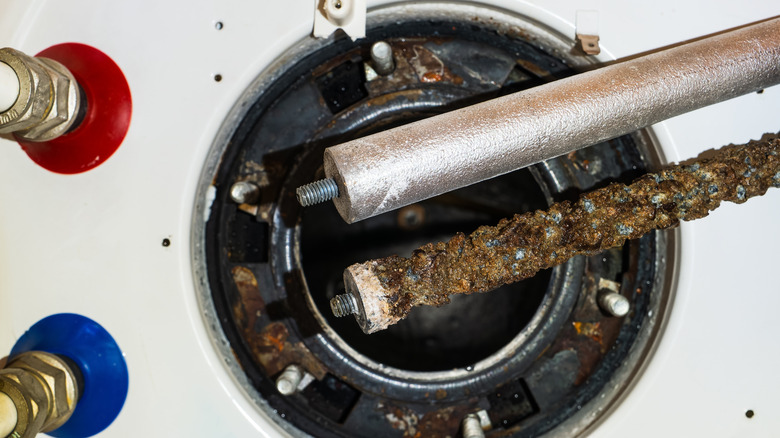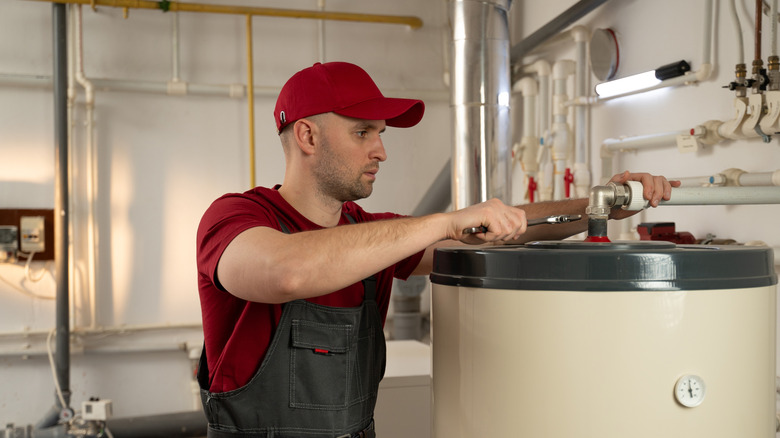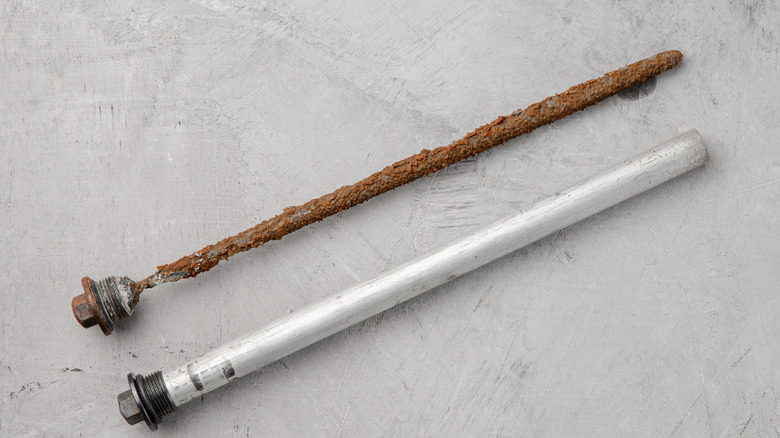How Often Should You Change The Anode Rod In A Water Heater & Can You Do It Yourself?
While we often take them for granted, a water heater is among the most important appliances in any home and is essential for daily tasks like showering, general cleanup, and doing dishes and laundry. But just like your dish and clothes washing machines, water heaters require maintenance and have a limited lifespan. You can expect your water heater to last between 8 and 12 years, but neglecting certain upkeep tasks will cut that down significantly.
Replacing a water heater can cost several thousand dollars with installation, and replacing the anode rod is one thing that can help yours last longer. The anode rod is a small metal bar that is designed to attract minerals and sediment from of the water, keeping them from corroding the walls of the tank. As minerals build up on the anode rod, it loses its ability to pull them from the water and the tank becomes vulnerable to corrosion. Check your water heater's owner's manual for the correct replacement interval for its anode rods; if it's not readily available there you can also contact the manufacturer via its web site or customer service number.
Anode rods are usually made of magnesium, zinc, or aluminum and should be replaced every three to five years for residential water heaters and every year or two for commercial models. Water quality, household size, and use habits will also affect the effective life of your water heater's anode rod. For example, hard water with lots of reactive aluminum and magnesium will gunk up your anode rod quickly; here are a few other things you should know about water heater anode rods.
How to know if your anode rod needs replacement
The type of anode rod your water heater uses also plays a role in its longevity; aluminum and zinc rods degrade more slowly than magnesium ones and are less severely affected by hard water. Paying attention to how much hot water your household is using can help you cut back on energy use and has the added bonus of extending the life of your water heater's anode rod. You can save money with a solar water heater, although this option will cost thousands of dollars to buy and install.
Knowing the signs of a depleted or failing anode rod helps you anticipate when it's time for a replacement. A visual inspection will tell you exactly how worn down it is; it's recommended to replace an anode rod once it has eroded to half its original size. If your hot water appears rusty or brown or you smell rotten eggs, your anode rod might already be spent and corrosion could be taking hold in the tank.
Can you replace anode rods yourself?
Changing one small component might seem like an easy DIY job, but there's more to swapping out a spent anode rod than just pulling it out and popping a new one into place. Anode rods are sometimes hidden under panels on the water heater, are obstructed by water or gas lines, or can be firmly stuck due to years of corrosion. You might need specialized tools like a large socket, breaker bar, or impact wrench to get yours loose, but even with the right gear a lot can go wrong during while replacing an anode rod. Tank pressure needs to be safely released first, and you'll want to turn off the water supply and disconnect any fuel or power sources.
Electric water heaters can present risks from working with water and live current, and inadvertently breaking or loosening a gas line can lead to carbon monoxide poisoning or explosions. If you're nervous about working with these risks, by all means call a professional plumber to change your anode rod; it's not worth permanently damaging your water heater or worse. That's not to say that replacing an anode rod yourself is an impossible task. If you're handy, have these essential home tool kit items, and work deliberately with proper precautions, swapping out the rod yourself can be a cost-effective way to extend the life of your water heater.


